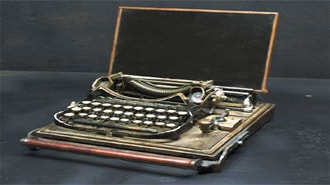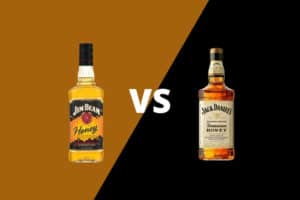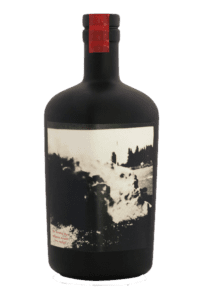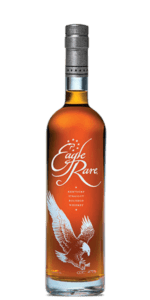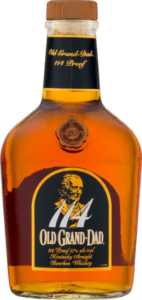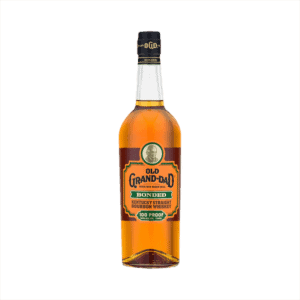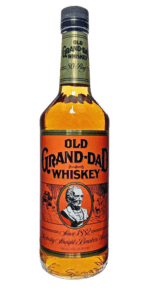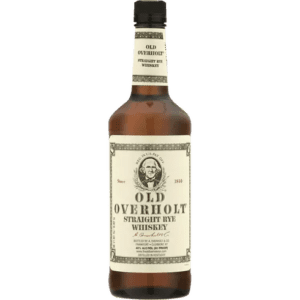Notes: are you serious?
A visit to the newseum – Jeffrey and Myrna Blyth
Let’s hear it for celebs – Vanessa Richmond
AGM of Newcastle plc – Geordie Hinney
The story behind the scoop– a review, Alasdair Buchan
Outed: the aristo who buggered a book – Richard Kay, Daily Mail
The freelance who lived off the fat of the land– Ian Markham Smith
Getting to the bottom of sheep – Allan Glenwright
Table of Contents
Are you serious?
You name it and the UK probably has a museum for it. Railways (York) and motor cars (Beaulieu) spring easily to mind but there’s a museum of ‘childhood’ in Bethnal Green, one for silk weaving in Spitalfields, another for ‘brands, packaging and advertising’ in Notting Hill and even one for cartoons in Bloomsbury.
But newspapers…?
Zilch.
And that is a failing, surely. Academics may be disdainful of the blatts, but that’s where they turn to learn. When they need to know what people were doing or saying or earning or spending or wearing, and what was going on at any given time since newspapers were created, that’s the source.
Newspapers are instant history. Written on the day (or sometimes at the weekend). Even though it’s said that nobody who has ever listened to two witnesses to a traffic accident can ever take history seriously, newspapers are where the truth is at.
In the US they take newspapers more seriously than we do. Some would say they take themselves more seriously, although that’s probably only the journalists.
And in Washington DC they have a museum – a Newseum, of course – devoted to the job, and to its history. The Blyths have been there, and report back.
We don’t – Ranters refuse to – take celebs seriously, mostly because we don’t recognise them. In our days we had star and important people and south of them we always described what people did for a living (actor, MP, author, weather forecaster); we didn’t assume that anybody was celebrated on account of having been on TV once, or sleeping with a footballer.
But Vanessa Richmond argues that celebs have a place in the news pages, if only because they are a conduit for getting people to think about serious (and therefore non-celeb) topics.
The idea of journalists not taking themselves too seriously at all is celebrated annually on Tyneside where former Daily Express photographer Gordon Amory – with a little help from the famous brewery – organises a splendid lunch reunion for hacks and snappers (many of them now émigrés) who once graced that fine city with their professional presence. We have a report of the function.
We take books seriously, of course, which is why we reprint two pieces about our recent publications: Tony Delano’s SLIP-UP, the story behind the scoop (published last month) from Diplomat – the 60-year-old house magazine of foreign diplomats based in the UK and of British attaches lying abroad.
And A CROOKED SIXPENCE by Murray Sayle (published last week), lifted from Richard Kay’s splendid page in the Daily Mail last Wednesday. More information about both – and more – books is of course on our BOOKSHOP.
And taking himself too seriously, while taking his fat punters for a ride, is Harry Siskind, sometime celebrated (there’s that word again) snapper and favourite of Fleet Street picture editors, apparently facing a bleak Christmas in clink.
While in a piece that might excite some Ranters in our far-flung outposts but did nothing for our correspondent, Allan Glenwright says he’ll never forget his first experience with sheep. OK… what he actually says is you never forget your first foreign assignment; and his took him all the way to the Scottish border with a commission that, had we known about it at the time, would have resulted in his being referred to as Ramsbottom for the last 40 or so years.
Over on the right we have more attempts to correct corrections, including a message about his origins from Mr James Eldershaw Grylls himself, memories of covering vice for The People by Ian Skidmore and of stories from the courts, and something totally incomprehensible about leather on willow (I think).
Now read on.
#
Important – and popular
From Jeffrey and Myrna Blyth
The world’s largest collection of journalistic memorabilia, The Newseum, has re-opened. Closed six years, this museum’s new home has been built at a cost of $350 million and is now located in the centre of Washington. The site itself cost $100 million and has a view of the Capitol, the National Gallery and the Supreme Court.
The first thing that greets visitors is a massive fifty-ton marble tablet etched with the words of the First Amendment, which is part of the Bill of Rights that has protected the American press for more than two hundred years.
Once inside visitors must expect to do a lot of walking There are seven floors, covering 250,000 sq ft., 14 galleries., one of which is devoted to thousands of years of newsgathering, 15 theatres, two television studios, thousands of Pulitzer prizewinning photographs and walls covered with the front pages of hundred of newspapers, including several British, which are changed daily.
The Newseum also has on display such contrasting historic items as a section of the Berlin Wall, including the guard tower that loomed over Checkpoint Charlie, the bullet-riddled van used by Time magazine reporters during the siege at Sarajevo, the pencil of the reporter killed in the Battle of Little Big Horn, which was Custer’s Last Stand in 1876, and the laptop used by Wall Street Journal reporter Daniel Pearl who was murdered in Pakistan. Also on display is the telephone that Rupert Murdoch used to run NewsCorp between 2002 and 2006, complete with management and editors’ speed dials.
In one theatre, replaying moments of journalistic history, visitors can sit in a chair that shakes and is blown by the wind – recreating the time when American newsman Edward R Murrow, from a chilly rooftop overlooking St. Paul’s, broadcast to America as London was being bombed.
In the gallery devoted to journalistic history, the first English ‘paper’ tells of the defeat of the Spanish Armada. (There is also a German paper with the Spanish version of the Battle that does not mention the loss of Spanish ships.) There are reports in other British periodicals of their time about the trial of Charles I, the Salem witch trials and Blackbeard’s last stand. Plus a copy of The Daily Courant of 1702,.the first English daily.
Currently there is an exhibition of The FBI and the Press which includes the bleak cabin in which the Unabomber lived and the ladder that the kidnapper of the Lindbergh baby climbed. Other exhibits highlight coverage of the bombing of New York’s World Trade Center and the Pentagon. It includes the mangled TV and radio transmission tower that stood atop the Twin Towers. There is a long and very moving video about the experiences of journalists and photographers who covered the attack. The Newseum attendants even hand out tissues to the viewers. The exhibit also includes next-day front pages from the Daily Mirror and the Daily Mail. The Daily Mail headline was a single word: ‘Apocalypse!’
Stressing the importance of the press, there is a memorial to journalists who died covering the news and an exhibit of the worldwide state of freedom of the press. It includes a map of the world that shows the state of press freedom in every country.
There is lots of razzle-dazzle throughout. There are booths in which visitors can pretend to be a TV reporter with the White House or Capitol in the background. They can read from a teleprompter or give their own report which can be taken home for a fee. The Newseum’s chief executive, Charles Overby, has described the massive museum as a cross between The Smithsonian and Disney World.
Although expensive in a city where many museums are free – admission is $20 – it is proving to be highly popular. To further defray expenses, the Newseum is often rented out for evening parties. Still there has been some criticism over its costs, especially at a time with media going through such hard times. Some also think that it is all a bit overblown, making it seem as if the press is the news rather than the means of reporting it.
And walking through during this time of financial crisis, it is striking that there seems to be so little devoted to financial and business coverage. After all the business of media and its future is the issue that right now is becoming so important to journalists and journalism.
#
We cannot live by hard news alone
By Vanessa Richmond.
‘You’re the problem,’ a male friend told me sternly a few weeks ago. I’m why the rich are getting richer and poor are getting poorer, why political apathy abounds, why environmental catastrophe looms. Because I, and people like me, read pop-culture stories – celebrity stories in particular. And because that’s what more and more media are covering instead of what they ‘should’ be doing (politics, the economy and international affairs). Hence, society is going to hell in a handbasket.
His criticism is equivalent to what gets posted in the comments sections of news sites after almost any pop-culture story. After blogger Emily Gould’s article ‘Exposed’ ran in The New York Times Magazine recently about the emotional trauma she experienced as a result of sharing too much of her and her friends’ lives online, many comments were variations on these ones: ‘Why is this important to me?’ and ‘I expect more from The New York Times.’
Sure, it’s true that there’s no shortage of real, crucial issues. And I do read ‘serious’ stories about them every day. But I am proud to say my reading diet includes far more stories that are considered to be the journalistic equivalent of genetically modified candy corn.
I’m hardly alone. The readership figures for pop-culture stories are skyrocketing while those of traditional news and newspapers are on the decline. It’s not just democracy – readers voting with their clicks – that has convinced me of pop culture’s worth. I think much-maligned celebrity ‘gossip’ pieces can provide a rich forum for values debates. So I’m proud to say I know as much about the Greek drama of celebrity life as I do about the sub-prime crisis or the cost of oil. And I consider them not candy, but flavourful parts of the main course.
Pop-culture journalism is like a misunderstood blonde friend who seems air-headed but gets the best marks in school, is the most fun to hang out with and the liveliest to talk to.
That New York Times article by Emily Gould, published on a Sunday, had 1212 comments by noon on Monday. The most popular political op-ed had 102. That’s not unusual.
And that pattern plays out in the real world, in my experience. Recently, at a dinner with some friends, I mentioned a story I’d read that listed ‘hippy-crite’ celebs – ones who say they’re concerned about the environment but whose actions suggest otherwise. John Travolta says ‘everyone can do their bit’ when it comes to global warming, but travels alone in his 150-passenger jet. Madonna headlined the Live Earth concert in London but has $2 million invested in mining and oil companies. Brad Pitt spearheads a green reconstruction project in the Hurricane Katrina-stricken Lower 9th Ward of New Orleans – but flies in his private jet to and from meetings there.
The conversation about the environment, policy and personal responsibility lasted most of the evening. What are the worst environmental offenses? What’s inexcusable and what’s unavoidable? What should governments be doing and what’s up to the individual?
Even the Emily Gould article is about the costs, benefits and limits of free speech, about censorship and privacy, about ethics in journalism. Did she go too far? What is too far? That’s what people talk about.
Or how about reports that Angelina Jolie and Brad Pitt bought a $60-million chateau in France: the perfect spot to welcome twins into the world. Mention the declining birth rate in developed countries, or the fact that the housing affordability crisis means many people are finding breeding just too expensive and you’ll get a few polite nods. But mention Brangelina’s recent purchase, along with the fact that each of their children has a personal nanny and people shout over each other to weigh in. People talk about the cost of children and the consumerism around it. Some say it’s wrong for a mother of four young kids to star in three movies this year – or to constantly uproot the kids as she does so.
In response to these stories, people I know talk about the value of marriage, of the ethics of having children versus adoption in an overpopulated world, of the difficulty of being a single parent, about a woman’s right to choose when she has kids and how, about child care and about men’s role in raising kids.
I mention this to people who doubt the complexity of the values debate spurred by celebrities and they tend not to believe me. But the same or even more heated arguments transpire – verbally and on news sites and blogs – than political ones between insider politicos. But while pop-culture readers accept that newsreaders cross into their territory, the opposite doesn’t necessarily apply.
In fact, most of the people who are critical of my reading tendencies would be horrified to hear they’re being sexist or elitist – but that’s often the case. One friend who says that every time he sees a tabloid he throws it in the garbage, acknowledges that men may read about sports, but says celebrities are far worse and thinks women are slaves to powerful media companies (gosh). Another friend said that with two university degrees, I’m capable of understanding the news (read: unlike some people) so I don’t need to spend my time on trash. He meant well, but doesn’t see his own bias.
Talking about patterns in pop culture is at least as useful a vehicle for social criticism as pure politics. It is politics. It’s also democratic. Pop culture is popular not because it’s dumb, but because it’s usually about the crucial questions of life and society, told with interesting characters and a constantly updating, suspenseful storyline.
Do I think all celebrity stories are valid and true? Well, I don’t tend to trust anything with unnamed sources – in news or pop culture. Do I think more media sites will publish only high-readership pieces and ignore news? Well, if they do, they’ll lack credibility and lose readers who want a balanced diet. And don’t tell me that I can’t sample tabloid journalism without becoming its dupe. Some critical distance is necessary when imbibing any form of journalism.
Do I think the current methods of gathering celeb news are okay? I have to admit that, like my other omnivorous eating habits, I eat meat but don’t actually kill the animal myself. I’ve never stalked a celebrity or hung out with the paparazzi, and I don’t plan to. In fact, I find the idea distasteful and would prefer that there were more ethical standards in place.
And as Lara Cohen, the news director at Us Weekly pointed out in her recent piece ‘Who are You Calling a Tabloid?’, political writers aren’t exactly angelic. ‘To say the news media’s coverage of [Barack Obama’s former pastor] Reverend Wright has been exhaustive is like saying that Us was mildly interested in Brad Pitt’s split from Jennifer Aniston. The true hallmark of sensationalised journalism is ginning-up controversy to drive sales. Wright’s outbursts were the mainstream media’s equivalent of Tom Cruise jumping on Oprah’s couch – a train wreck no-one could turn away from. And so they milked it, regardless of the impact on the very race they were supposedly covering objectively.’
At least I know what I’m eating.
This article first appeared in the Australian journalists’ Walkley magazine. Vanessa Richmond is a columnist and contributing editor with Canadian news site The Tyee.
#
Our friends in the North
By George Hinney
Having milked various pension funds for yet another year, a pack – that being the appropriate collective noun – of veteran media men gathered in the Magpie Suite overlooking Newcastle United’s field of broken dreams at St James’s Park for the annual Newcastle Pens and Lens reunion lunch of those who at some time in their career had plied their trade in that great city.
As always it got off to the most convivial of starts as the pre-prandial drinks were paid for by Scottish and Newcastle Breweries who have hosted the event for all if its 18 years as an act of pure generosity rather than with any publicity expectations from those who, some long ago, had swapped Press passes for bus passes and for whom scoops now related to whisky glasses and pint pots rather than banner headlines.
After being unable to attend the previous year, the occasion was once more adorned by Gentlemen Ranters editor Revel Barker, aka the Grandee of Gozo, who found amid the ensemble two others who had known the triumphs and tribulations of editorship, Christopher Ward (Daily Express) and David Banks (Daily Mirror), who began their careers as young reporters in Thomson House in the city, home the Newcastle Evening Chronicle and Journal, and have both now retired to the Scottish Borders. Mr Barker, who at the tender age of 20 had been recruited by the Daily Mirror to cover the north east beat as a news reporter, did not look unnecessarily contrite at leaving his lovely wife Paula to take sole charge of a house move back on their island retreat. As he explained, women are so much better at such things.
The toast, as always, was to ex-Daily Express snapper Gordon Amory who conceived the reunion and has always been its organiser despite this year having to interrupt arrangements to undergo a painful hernia operation while his wife Beatrice, ever a supportive influence, also required regular hospital treatment. In turn Gordon thanked David Jones, the brewery’s deputy head of communications, who made a short speech of welcome.
The main pre-lunch address was as usual given by Clive Crickmer, who for 30 years had been the Daily Mirror man in the city. He expressed relief that nonody in the intervening twelve months had been summoned to the Great Newsroom. Freelance cameraman John Learwood, who will be 86 in January, had had a heart pacemaker inserted as the latest episode in a remarkable medical history from which he has always emerged with his customary mix of buoyancy, bonhomie and bloody-mindedness. As Clive put it: ‘There is now hardly a part of his anatomy that hasn’t been repaired, remodeled or removed – and if you have a couple of hours to spare he’ll gladly give you some of the details.’
Crick urged those who did not already do it, to log onto the Gentleman Ranters website which now has 5,000 visitors a day (greater than the readership of UK Press Gazette) and the grand total since its inception in July last year was about 1,700,000. He echoed The Times verdict that it was ‘a brilliant compendium of reminiscences of the great days of Fleet Street’.
And so to a long and liquid lunch after which Chris Boffey, The Observer ‘head of news’and newly-elected chairman of the Newspaper Press Fund, sought donations to it which raised £450. Then on to the nearby Strawberry public house for more good chat among clinking glasses before departure with the hope that the pension funds would continue to take a hammering during the coming year, though having done nothing in the previous few hours to enhance that prospect.
Those present, in no particular order, were Roger Scott, John Woodcock, John Sherbourne, Gordon Broome, Michael Scott, Keith Perry, Doug Watson, Mike Hughes, Frank and John Robson, Revel Barker, Clive Crickmer, Phil Spencer, Tony Brooks, Neil Morgan, Peter Whittell, Tom Buist, Chris Boffey, Jim Merrington, David Banks, Philip Aris, Chris Ward, Peter Crookston, Stanley Blenkinsop, Barry Henson, Alan Baxter, John Wardhaugh, John Bell, David Haigh, Gordon Amory, Elaine Reed, Andy Hughes, John and Chris Learwood, John Sleight, David Taylor, Jim Dumighan, David Dawson, Brian Nichols, Vernon Addison, John Bird, John Sutton, Ian Kerr, Peter Freeman, Gordon Chester, Stan Oliver, John Bailey, Louis Yaffa, Roger Carroll, Roger Bolam, Peter Morris and John McManus
#
The story behind the scoop
- SLIP-UP by Anthony Delano. Published by Revel Barker. £9.99
Ronnie Biggs was a minor member of the team that robbed a UK mail train in 1963 of £2.6m. But he became the most notorious because he escaped from jail and the police couldn’t find him. Then came ‘the scoop’, a Daily Express reporter found Biggs in Rio de Janeiro and the chase was on.
Scotland Yard’s Superintendent Jack Slipper (hence the book title) set off to get his man as every Fleet Street paper sent its heavy mob to prise Biggs from the Daily Express. From then on things went downhill disastrously and hilariously.
Slipper got his man but forgot to check if there was an extradition treaty between Brazil and the UK. There wasn’t.
There simply hasn’t been a funnier book on journalism since Evelyn Waugh’s novel Scoop and this one’s true.
A welcome updated version of a classic account.
#
A novel end to a literary mystery
By Richard Kay
He was a World War II hero, survivor of Colditz and lover of painter Lucian Freud’s sometime muse Emily Bearn.
Now, four years after his death, adventurer Michael Alexander has been named as the mysterious litigant who destroyed the publication of writer Murray Sayle’s autobiographical novel A Crooked Sixpence.
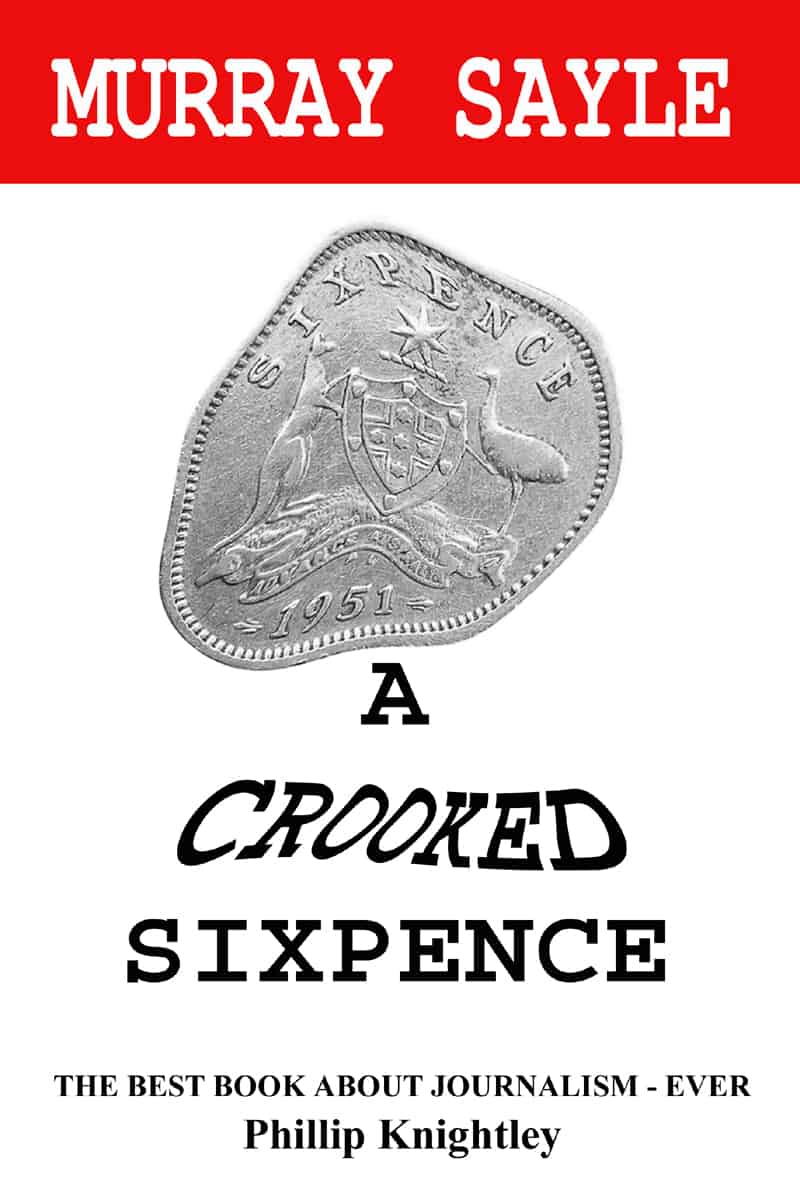
His action not only scuppered the book, but deprived the distinguished Sayle, now 82, of a lucrative spin-off from a Hollywood film deal.
Alexander, who was Bearn’s lover before she took up with Freud, was penniless at the time Sayle’s novel appeared. He was convinced that a character in the book was based on him and thought by complaining he could make some money.
Until now the identity of the person who threatened to sue Sayle – famous for getting the only interview with spy Kim Philby after his flight to Moscow – has been kept a secret. The pulping of the book caused a sensation at the time.
‘Michael Alexander believed he was identifiable as a character on the run from creditors and wanted to sue,’ says a friend of Sayle. ‘He’d heard all publishers had libel insurance and thought he could collect a load of cash without anyone being seriously harmed.
‘Incredibly, he was a friend of Murray’s. But the get-rich-quick plan backfired because the publishers simply recalled the book and pulped it.’
#
What made Harry run
By Ian Markham-Smith
Hardly a week went by in the late 1980s and through the mid-1990s when American photographer Harry Siskind was not involved in supplying a sensational splash or spread for titles like the Sunday Mirror, the People and the News of the World.
Siskind, an over-energetic, brash workaholic, was a constant source of exclusive material for such picture editors as Russell Cox and Paul Bennett.
The flamboyant dresser with a taste for loud ties was much admired by the three notable female national editors of the time, Eve Pollard, Bridget Rowe and Patsy Chapman.
During the seven or so years he was the preferred paparazzo he teamed up with a string of former Fleet Street journalists-turned-USA-based freelances including Gerry Hunt, the late Peter Williams, me, Liz Hodgson, Tim Miles and current Sun senior executive Graham Dudman – working relationships that invariably ended in tears.
But 53-year-old Siskind has gone from being involved in uncovering the news to becoming the news in the United States.
The former snapper has been exposed as one of the world’s biggest snake-oil salesmen.
Siskind’s bank account got fat by conning thousands of obese Americans into believing that they could effortlessly loose weight.
He has been revealed as the mastermind of an elaborate nationwide radio campaign that made his victims think they could shed their excess pounds overnight and in the process he made many millions of dollars.
A hardened former Fleet Street journalist once said that Siskind was a genius when it came to work but a total failure as a human being.
Texas prosecutors agree – but they describe him as a criminal genius.
Now flash Harry is facing more than three years behind bars when he comes up for sentencing in a few weeks because he compounded his crimes by lying to investigators.
The rise to fabulous wealth and fall from grace for Siskind, who was often cash-strapped during his years as a journalist and has previously filed for bankruptcy, began in 1999 soon after the New Jersey-based photographer quit journalism and moved to San Antonio where he set up his phoney diet supplements scheme under the name Mark Nutritional Inc.
The promise to users was ‘lose weight while you sleep.’
Siskind paid himself a salary of $1.8 million and his red-haired wife, Patsy, a former TV weather girl who he appointed as a director of his company, an additional $800,000.
By the time Mark Nutritional was forced to shut down in 2003 it had sold about $155 million worth of its ‘Evening Weight Loss Formula’.
Nevertheless, since then Siskind has had nothing but sleepless nights as US federal investigators pursued him.
At one point, it looked as if he had got off the hook after reaching an undisclosed deal with prosecutors but that went wrong when they discovered he had been lying about hidden assets.
By the time it all unravelled, 600 employees were out of jobs, radio disc jockeys across the nation were out of their commissions and a host of companies were pursuing him for as much as $37 million they claimed they were owed.
A national class-action lawsuit by his customers wants $190 million that Siskind is said to have spent a long ago.
Judges and creditors were suspicious about Siskind’s lavish lifestyle. A corporate jet, which he used for family trips and entertaining friends, along with three houses in the same neighbourhood and a nightclub on San Antonio’s famous River Walk, he had started soon after his diet company took off, were some possessions that raised eyebrows even when the company was flying high.
Siskind told investigators that he gave up being a celebrity photographer because he was sick of the travelling and being away from home and wanted to spend more time with his family. He and his wife, with whom he has two sons, launched a network marketing business. It was then that he decided to reinvent himself, not with his cameras, but as a diet guru.
He began by persuading talk show hosts and DJs to use his product. If they lost weight, they would be paid to tell their story on air. But, after complaints, the Feds decided the company couldn’t back up its claims.
Siskind got his start as a photographer in Florida, where he was born and raised. For most of the 1970s and much of the 1980s, he worked for well-known American celebrity newspapers such as the National Enquirer, The Globe and the then Rupert Murdoch owned Star.
Top Gun actress Kelly McGillis sued Siskind after he and Tim Miles, a former news editor of the Daily Mail (married to one-time People editor Wendy Henry) who spent some years freelancing in the US, appeared at a private showing of her house, which was up for sale, and started asking her husband about his then recent arrest for solicitation of a prostitute.
Disgraced American baseball legend Pete Rose punched him in a car park during an altercation.
And the family of Superman star Christopher Reeve was furious when – by lurking in the bushes outside a rehabilitation clinic – he secured the first picture of the actor as a quadriplegic following his tragic horse-riding accident.
In 1985, he moved to New York when he was named photo editor of the New York Post, another newspaper owned by Murdoch.
After leaving that position, Siskind turned to television as an independent producer doing some work in 1989 for one of the first American celebrity TV news shows, ‘Inside Edition’.
In August 1989 he became the first journalist to interview John Hinckley, the man who shot and wounded President Ronald Reagan in 1981. He managed to get a signed agreement for the exclusive TV interview from Hinckley’s lawyer and family members.
Despite the television successes, Siskind continued to shoot revealing and exclusive photos for the print media, including the British tabloids.
In 1988 he contacted the Sunday Mirror with a Rolling Stones exclusive and his Fleet Street career took off from there.
In 1994 he made headlines when British television prankster Jeremy Beadle threw a brick at him taking pictures of the comedian on a Barbados beach.
But now it’s the law that is throwing bricks at him for Siskind’s legal woes are by no means over.
US District Judge Orlando Garcia has demanded to know why Siskind got a public defender when he still appears to have the means to pay for his own lawyer.
Siskind has not commented on his latest legal problems but it does not look like he will be spending a very merry Christmas. He faces between 30 to 37 months in prison when he is sentenced on December 18.
#
Ramsbottoms and me
By Allan Glenwright
Like the first byline, you always remember your first ‘foreign’, although in this case it was only as far as the Scottish Borders. Not exactly exotic, I admit, but a bit of an adventure for somebody new to the business.
While working for an agency in Newcastle upon Tyne in the early sixties a job came up from a farming newspaper to photograph the Ram Sales at Kelso.
No chance to volunteer – I was sent anyway, but the prospect seemed exciting enough.
Lacking personal transport – like a car – the only way to get there was by omnibus to St Boswells. It stopped at every little village and eventually arrived late at night when the only lights visible were at the Buccleuch Arms. Enquiries revealed that my overnight destination – the Dryburgh Abbey Hotel – was still several miles away on the other side of the river.
A taxi was the only answer but it was being repaired so I was driven to the hotel in a hearse. At least I arrived upright in the front instead of horizontal in the back.
The Dryburgh Abbey Hotel in 1963 was an eye-opener for a young photographer unused to such luxury: linen sheets and a stepladder to get into the four-poster bed. Having missed dinner the maid, resplendent in a black outfit with white starched apron, produced a pot of tea with some toast and smoked salmon. There was a memorable breakfast next morning.
Thus fortified, on to work at the Ram Sales, where reality dawned. The brief was fairly simple: side-on and rear of the animals to clearly show their accoutrements.
Now, having taken fifteen pictures of rams’ backsides, enthusiasm for the job began to wane. Instead I started to photograph the farmers, the auctioneer and the mart. Close-ups of weather-beaten faces, a dog tied by string to a gatepost… That sort of thing. A feature piece really.
Big mistake.
This did not go down too well with the paper’s art editor who I think was Miss Darby (apparently she wasn’t allowed a first name). She was expecting lots of pictures of rams’ bottoms rather than of people.
This different approach to document Ram Sales was taken ‘upstairs’ for a further opinion.
Unfortunately those upstairs liked it so much that afterwards I got saddled with every job that involved trudging through what seemed like acres of cow, pig and sheep shit.
Even today, by chance, I observe the odd rams buttocks. They may mean something to some people but they still all look the same to me.
###

